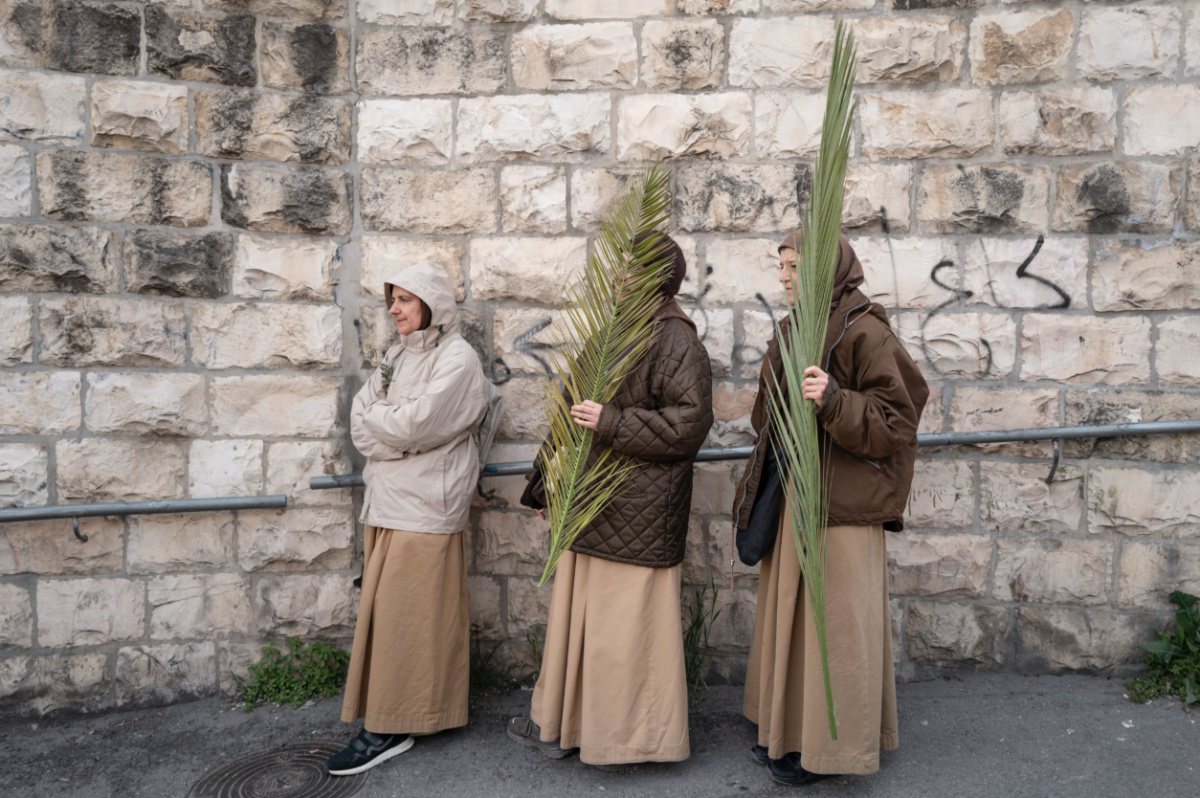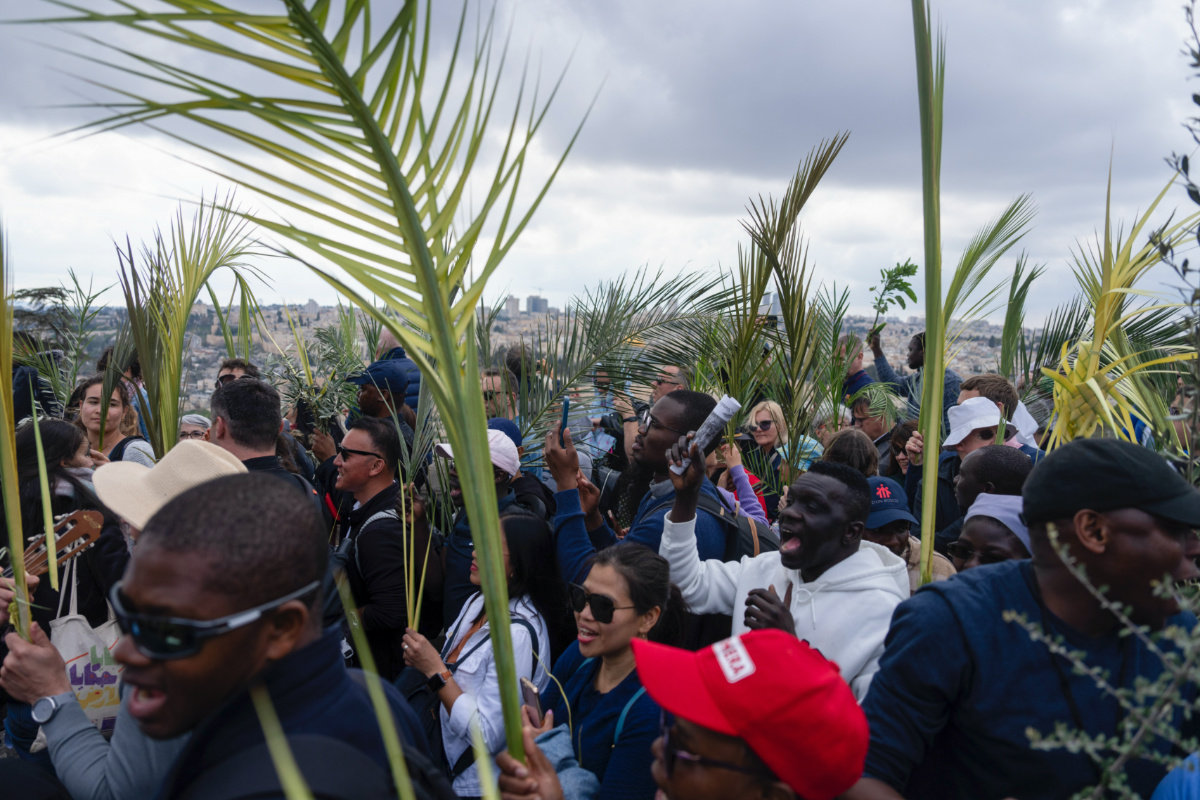
As the world marked Palm Sunday on the weekend, LUIS ANDRES HENAO, of Associated Press, explains what the day is all about…
Palm Sunday commemorates the Christian belief in the triumphal entry of Jesus into Jerusalem, when he was greeted by cheering crowds waving palm branches that they set out on the ground along his path, according to the Bible.
This year, Palm Sunday falls on 24th March. Also known as Passion Sunday, it marks the start of Holy Week. The most sacred week of the Christian year includes the Good Friday re-enactment of Jesus’ crucifixion story and death, and their belief in his resurrection on Easter.

Christians walk in the Palm Sunday procession on the Mount of Olives in east Jerusalem, on Sunday, 24th March, 2024. PICTURE: AP Photo/Ohad Zwigenberg.
Here is a quick look at Palm Sunday’s significance.
Is there a donkey in this story?
Yes.
The procession of Jesus into Jerusalem is described by the four Gospel writers in the Bible.
The Gospels differ, but based on one expert they agree on this: Jesus rode into Jerusalem on a donkey – or a colt. So, which one is it?
Colt is defined as “a young male horse that is usually not castrated.” But in the Bible, the word meaning “colt” is used almost exclusively for young donkeys, not horses, writes Joanne M Pierce, professor emerita of religious studies at the College of the Holy Cross.
Pierce writes that this brings to mind a reference from the Book of Zechariah in Jewish scriptures, where the prophet describes a victorious king who enters Jerusalem riding on a donkey.
In Judaism, she says, the passage from Zechariah refers to the Messiah, a spiritual king who would peacefully redeem Israel, and the donkey is interpreted as a sign of humility.
“In Christianity, this animal becomes almost a symbol of Christ himself, given how it patiently suffers and bears others’ burdens,” Pierce writes in a piece published by The Conversation. “Horses, on the other hand, tend to be associated with royalty, power and war.”
What about the palms?
In the Biblical Palm Sunday story, a cheering crowd greeted Jesus along the road. Some spread their garments on the ground; others threw down leafy branches they had cut from the fields. In the Gospel of John, they are branches from palms, a tree that symbolised victory and triumph.
In the Gospel of Matthew, people began to shout: “Hosanna to the son of David! Blessed is the one who comes in the name of the Lord! Hosanna in the highest heaven!” The word “Hosanna” was a plea for salvation and an exclamation of adoration.
After the procession, the Bible says Jesus entered Jerusalem and went into the temple.

Christians walk in the Palm Sunday procession on the Mount of Olives in east Jerusalem, on Sunday, 24th March, 2024. PICTURE: AP Photo/Ohad Zwigenberg.
How is Palm Sunday celebrated?
The ritual or liturgy typically starts with a blessing of the palms by clergy. It’s followed by a reading of the Passion of Christ, meaning an account of the final events of Jesus’ life.
Some ceremonies in German-speaking countries used to include a figure of Jesus riding a donkey, Encyclopedia Britannica says. The figure is called a “ Palmesel,” or German for “palm donkey,” according to New York’s Metropolitan Museum of Art, which on its site recounts how worshippers would lay palms on the ground before the Palmesel during lively processions.
We rely on our readers to fund Sight's work - become a financial supporter today!
For more information, head to our Subscriber's page.
Christian pilgrims in the Holy Land mark Palm Sunday by holding Masses and processions retracing Jesus’ triumphal entry. Worshippers carry palm fronds and olive branches and march from the top of the neighbouring Mount of Olives to Jerusalem’s historic Old City, home to holy sites of the three Abrahamic monotheistic faiths.
In churches around the world, the palms are often taken home by congregants, and some will become ashes.
How do the palms turn into ashes
Ashes can be purchased, but some churches make their own by burning the palms from prior years.
They’re used to make the ashes for Ash Wednesday, the solemn day of fasting and reflection that signals the start of Christianity’s most penitent season.





